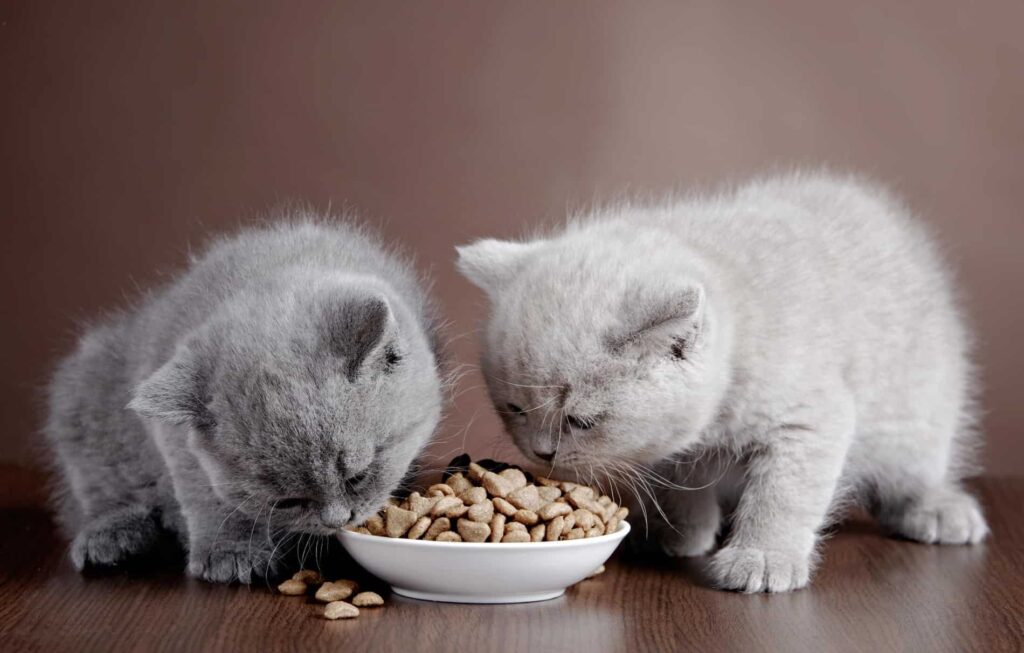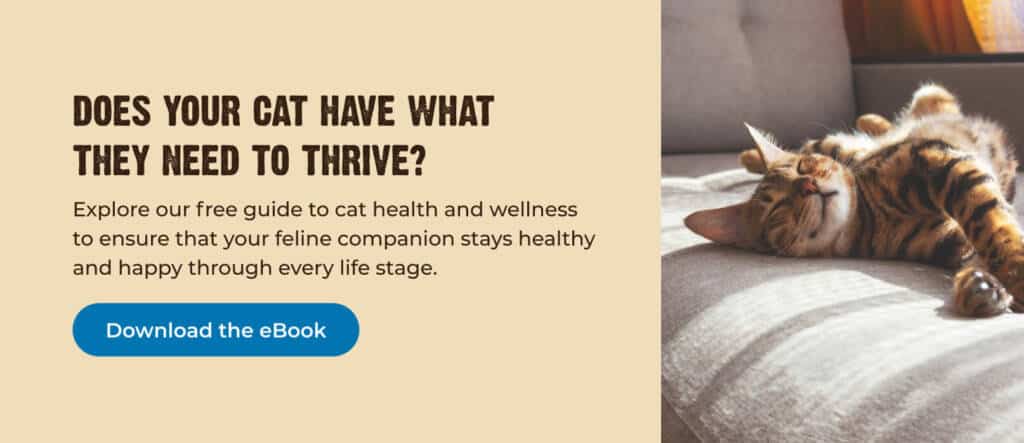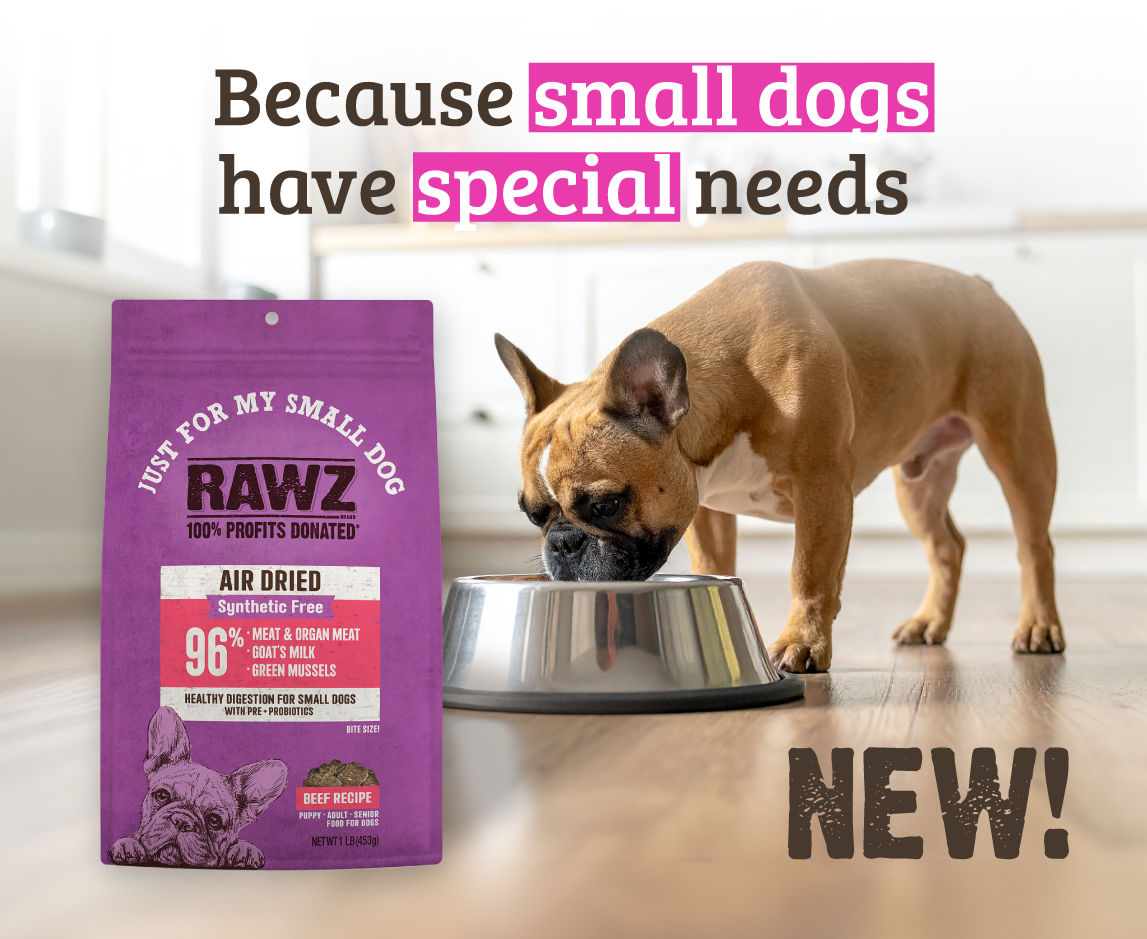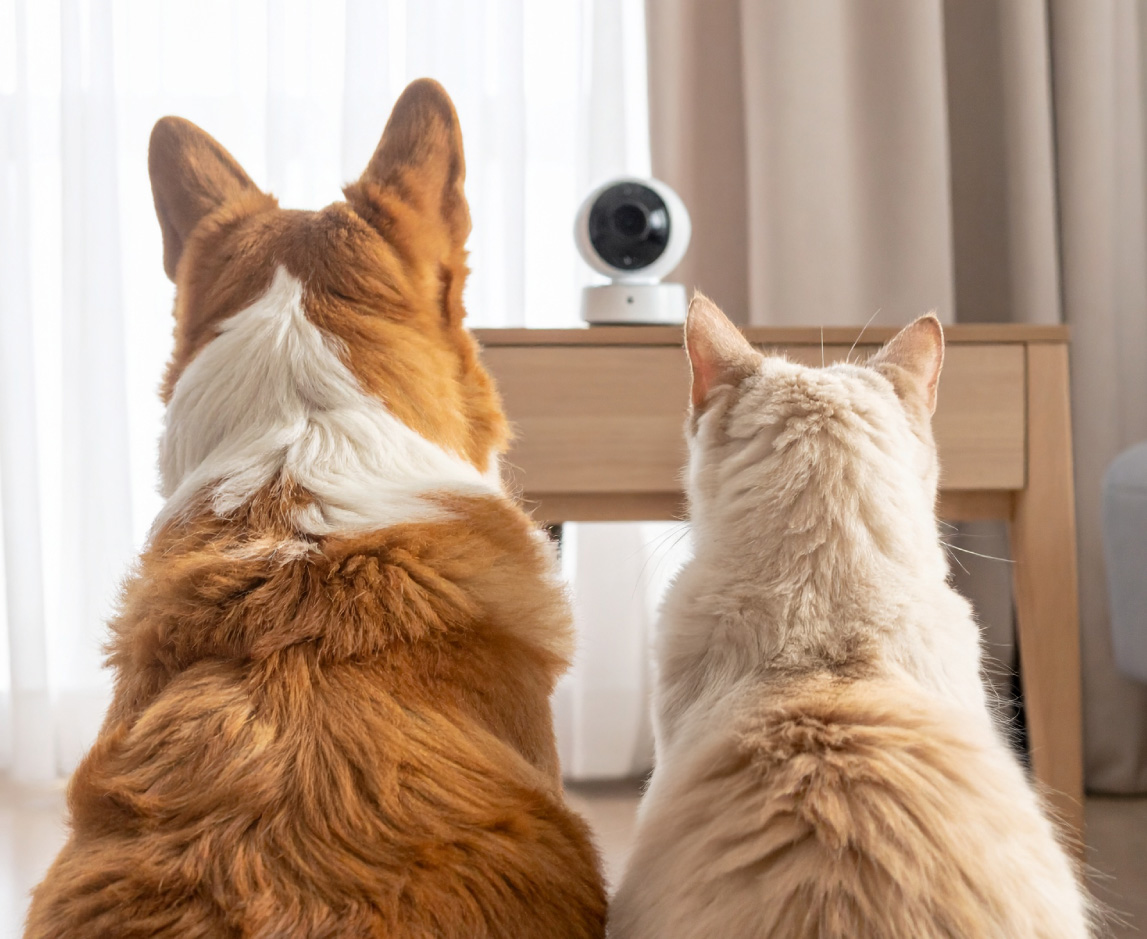The arrival of a new four-legged family member in your home is an exciting time. But this excitement may also come with some anxiety about the new responsibilities, particularly when the new pet is a young puppy or kitten. For example, how can cat parents-to-be ensure their new kitten receives a complete and balanced diet?
During this stage of their growth, kittens need high levels of protein to build new tissue; by comparison, adult cats primarily need protein to maintain their body mass. There are also certain foods that, while they may be fine for adult cats, kittens cannot eat.
Without further ado, let’s explore the unique guidelines for feeding kittens.
How Is a Kitten's Diet Different Than an Adult Cat's?
There are minor differences in the amounts of micronutrients (i.e. vitamins and minerals) between kitten and adult cat food. The primary difference lies in the amount of macronutrients, such as protein.
Kitten food includes higher levels of protein and amino acids than adult cat food. Amino acids, including taurine and lysine, are essential for overall feline health, particularly when it comes to building a healthy immune system and supporting tissue growth. Kitten food also has higher fat content; with nine calories per gram, fat provides twice the amount of energy than either protein or carbohydrates. Fat also supports healthy neurological development in kittens.
How to Choose the Best Kitten Food
Step one when choosing kitten food is to ensure that it contains all the required nutrients for their life stage. The Association of American Feed Control Officials (AAFCO), the organization charged with regulating commercial pet foods, requires compliant producers to include a Statement of Nutritional Adequacy on their labels. This statement is usually found near the Guaranteed Analysis section and indicates the life stage for which the food is formulated.
Kittens fall into the Growth and Reproduction AAFCO life stage, and food with this classification (or an All Life Stages label) is formulated for young, pregnant or lactating cats. While this statement indicates that a kitten’s basic nutritional needs will be met, determining the quality of the food isn’t quite so simple…
Finding High Quality Kitten Food
In general, consumers have grown somewhat skeptical of grandiose marketing claims such as pet foods that purport to be “human grade” or “custom-formulated” for your pet. But due to labeling laws regarding nutritional accuracy, the nutritional information found on pet food labels is generally reliable.
First and foremost, the ingredient list will shed light on the specific makeup of a particular cat food. In general (as with human food), the fewer ingredients you recognize, the less “natural” the product. Ingredients are listed in descending order according to proportion; look for kitten foods that feature minimally processed animal proteins, organ meat and produce near the top of the list.
You can also ensure that your kitten is getting quality nutrition by assessing a product's ingredient suppliers. Look on a company’s website for industry certifications (like Safe Feed/Safe Food and compliance with the Food Safety Modernization Act) or transparency about where their ingredients come from. This can look like an ingredient sourcing list or webpage that details each ingredient’s origin.
Labels that feature flashy jargon or beautiful images don’t necessarily equate with quality. And remember: An independent specialty pet supply retailer can be a great, trustworthy resource when assessing the quality of a certain pet food.
>Related Reading: What’s In Their Bowl? How to Read & Decode a Pet Food Label
Ingredients to Avoid in Kitten Food
Be extra careful of excess “filler” carbohydrates when choosing kitten food, especially products derived from corn. In feline nutrition circles, carbohydrate-heavy ingredients are considered fillers; as obligate carnivores who thrive on a meat-based diet, cats have little nutritional need for carbs. But because corn and corn-derived ingredients are plentiful and inexpensive, some commercial cat food producers will use them to bulk up their formulas.
Kittens (and all cats, for that matter) should avoid foods containing chemical preservatives, as these can have harmful effects on feline development. Artificial preservatives such as butylated hydroxytoluene (BHT) and butylated hydroxyanisole (BHA) are suspected carcinogens that can cause organ damage, and their negative effects can be magnified in developing kittens.
Do Kittens Need Wet or Dry Food?
Hydration is important for cats of all life stages. Cats evolved to derive all their hydration from the meat they consume, so even domestic cats lack a naturally strong thirst drive that leads to less water consumption. Feeding growing kittens a diet of primarily wet food can ensure that they receive proper hydration, and lowering their dry food intake can help protect their small, developing teeth.
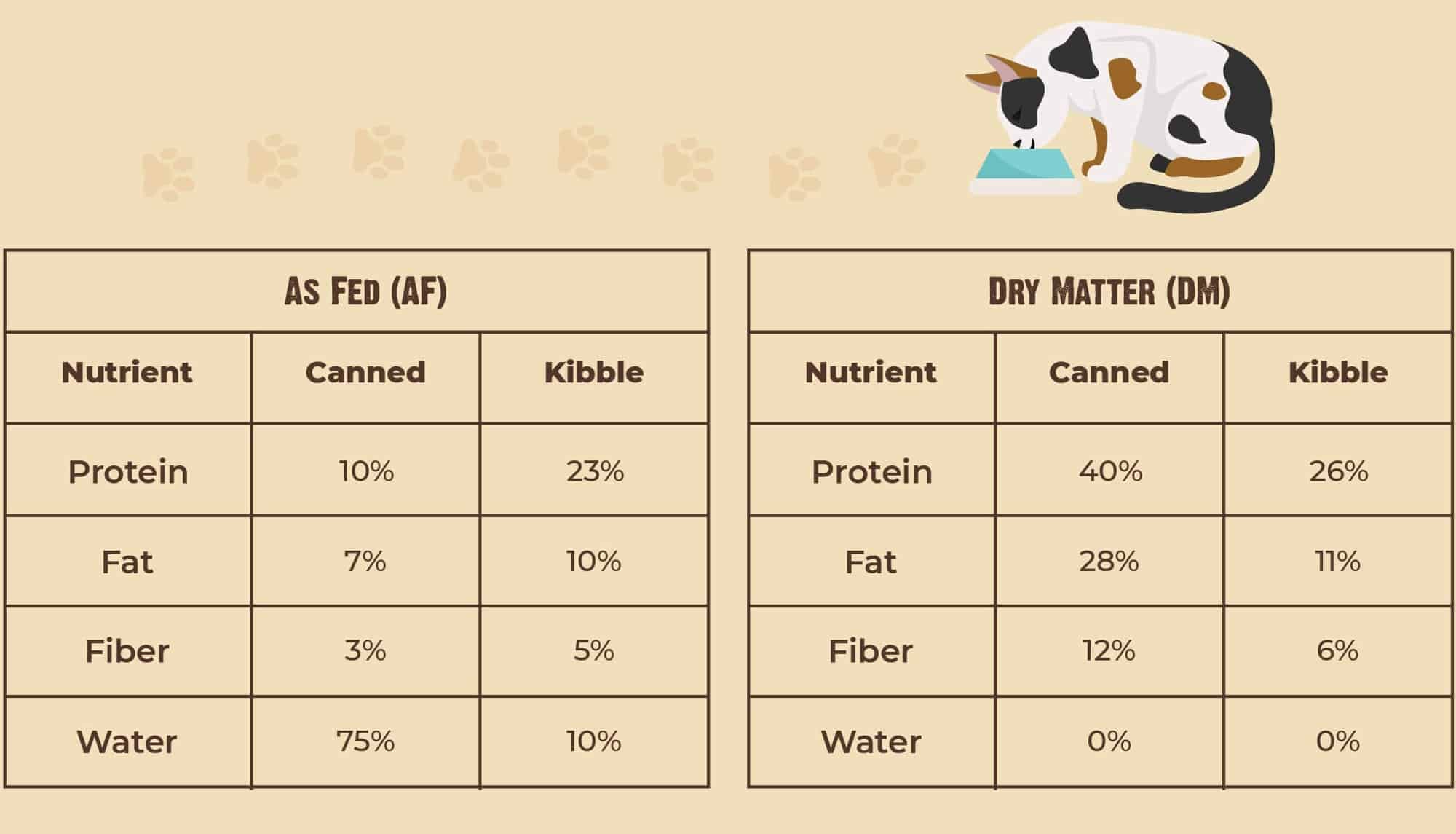
https://www.dogfoodadvisor.com/choosing-dog-food/dry-matter-basis/
As fed (AF) — This refers to food as normally fed to animals. It may contain anywhere from 82% water for more moisture-filled food to 10% water for drier food like kibble.
Dry matter (DM) — This refers to the substance of a food that is not water. It is computed by determining the percentage of water and subtracting the water content from 100%. On a dry matter basis, food contains 0% water.
When comparing high-moisture foods (like raw or canned) to low-moisture foods (like kibble or freeze dried), we are essentially comparing apples to oranges. In order to compare the different moisture content of foods, we must remove the water and look at them on a DM basis. Once the water is removed, the percentage of nutrients will be higher than when comparing it to AF, in which are the numbers listed on the guaranteed analysis.
Food consistency aside, a kitten’s metabolism burns calories more quickly and consistently than an adult cat’s, which means they require more frequent feedings. New cat parents may want to feed their kittens three times a day instead of twice to help accommodate their metabolic needs ().
>>Related Reading: Daily Feeding Guidelines for Adult Cats
How to Transition Your Kitten to New Food
At a certain point in your kitten’s development, you may want to switch them from one dry food to another, or from a kitten formula to adult cat food. Kittens are weaned off their mother’s milk within four to six weeks; once they seem more interested in their mother’s solid food than her milk, or when they begin to chew on their bottle (if bottle-fed), it’s time for them to transition to solid food.
Follow this guide to gradually transition your kitten to new foods: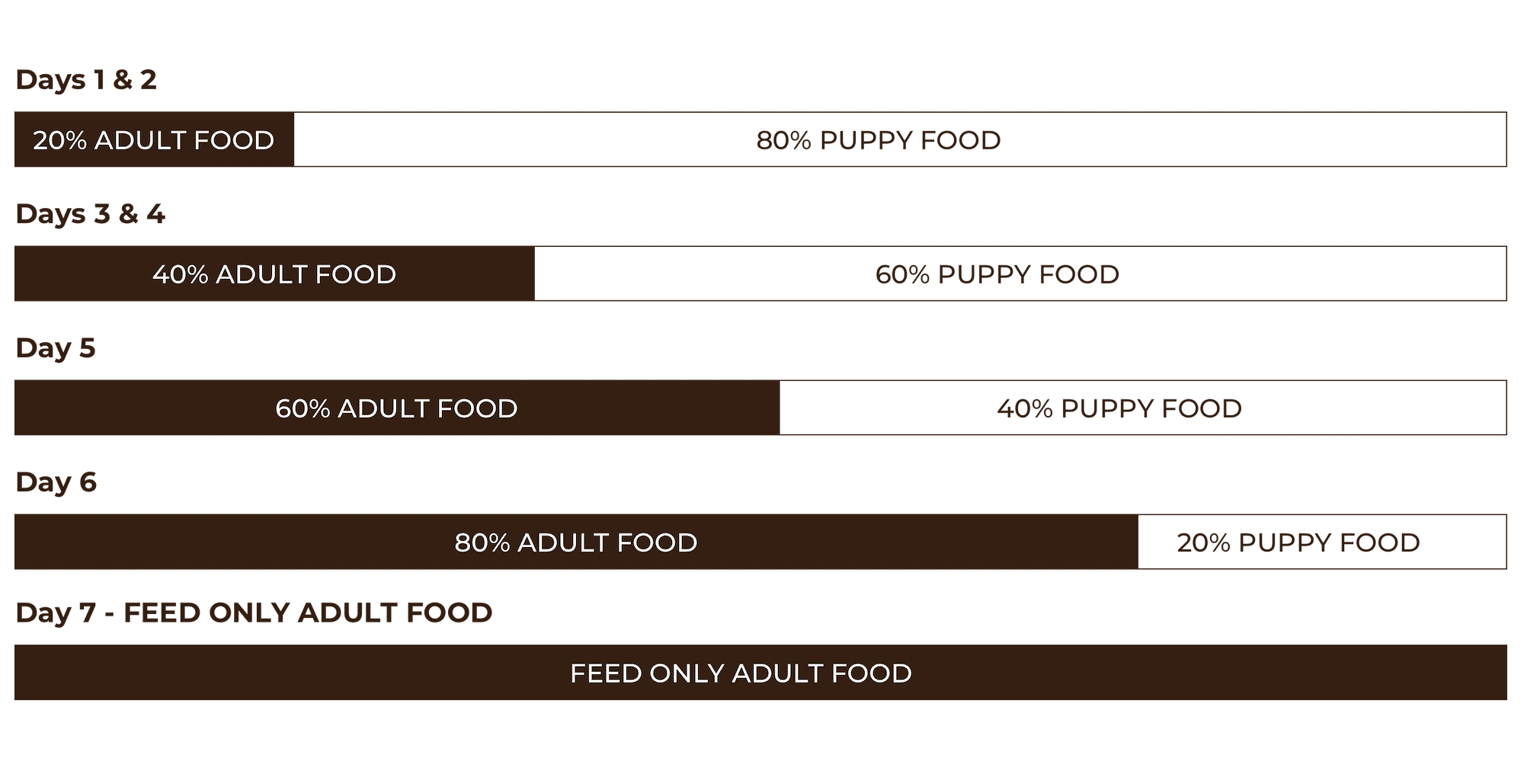 Cats can be notoriously picky eaters and may have difficulty accepting changes to either the protein source or texture of their food. Cat’s tongues are covered in tiny, hooked barbs called papillae that help them pick up their food and impact their sense of taste. The texture and sensation of a product on their tongue affects cats more strongly than it does dogs, and something that feels unfamiliar or unpleasant will discourage them from eating it.
Cats can be notoriously picky eaters and may have difficulty accepting changes to either the protein source or texture of their food. Cat’s tongues are covered in tiny, hooked barbs called papillae that help them pick up their food and impact their sense of taste. The texture and sensation of a product on their tongue affects cats more strongly than it does dogs, and something that feels unfamiliar or unpleasant will discourage them from eating it.
Cats also imprint on specific tastes, smells and textures as kittens and therefore should be exposed to a variety of textures and proteins early on. This will increase the likelihood of a cat accepting a wider variety of food flavors and textures as an adult.
Transitioning is often about trial and error — the method of transition that works for one cat won’t always work for another. Some cats readily accept new food when it’s served in a separate dish, while others have an easier time when new foods are mixed in with their existing diet. Regardless of the method, gradual transition is always recommended, with a period of five to seven days being the sweet spot.
How Many Times a Day Should You Feed a Kitten?
Because they are actively growing animals, kittens need plenty of biologically appropriate nutrition to support proper development. This means kittens need more frequent feedings than adult cats.
A kitten’s feeding schedule can incorporate two methods: free-feeding or meal-feeding. The free-feeding method allows your kitten to access their food throughout the day, while meal-feeding involves portioning out their daily food intake at regular intervals. Free-feeding works best for dry food, while it’s best to meal-feed wet foods to maintain their freshness. In multi-cat households, it can sometimes be challenging to monitor each cat’s food intake, especially if your cats have established a hierarchy. If this is the case, consider feeding cats of different ages or dominance levels in separate areas of your home.
Adult cats are usually satisfied with two daily feedings, but with smaller stomachs and a faster metabolism, kittens need anywhere from three to five feedings. Your own schedule will determine your ability to maintain a consistent feeding routine; if you have a very young kitten (six to ten weeks old or younger), you may need to adjust your daily schedule to accommodate theirs, or find someone who can help out with feedings.
Foods to Avoid Feeding Kittens
In addition to foods that all cats should avoid (onions, chocolate, raisins, etc.), kittens should not consume cow’s milk or baby food meant for humans. Both of these food items can cause loose stools or diarrhea in kittens. Once a kitten is weaned off their mother’s milk, they lose the ability to break down any kind of dairy from cows, so it’s best to withhold dairy products altogether, no matter a cat’s age.
Help! My Kitten Wants to Eat All the Time
A kitten parent’s first responsibility is to ensure that their new charge’s nutritional requirements are being met. While in the AAFCO’s Growth stage, kittens need plenty of high quality protein to build new tissue, plus adequate calories to meet their energy needs — which, for kittens, can be quite high.
However, a diet high in calories but low in nutrients or quality protein can contribute to nutrient deficiency, leading to a ravenous appetite and overeating. Since cats are biologically designed to get their hydration through meat, overeating can also be a sign that they are not getting enough water. A kitten who enjoys a high quality, moisture-rich diet and access to clean, fresh water should feel satisfied with three to five portioned meals a day.
Excessive hunger in cats of any age may be indicative of an underlying medical condition, so it’s always best to consult a veterinarian if you have concerns.
All RAWZ meal-free dry recipes and pâtés meet the AAFCO’s guidelines for All Life Stages. This means that cats at any stage of life may consume food with this classification, as long as they are fed the correct amount for their weight and age. All of our packaging includes specific feeding instructions, so you can be sure your new kitten is receiving adequate, age-appropriate nutrition. RAWZ also donates 100% of profits to charities that help animals and people, so every purchase makes a difference!


